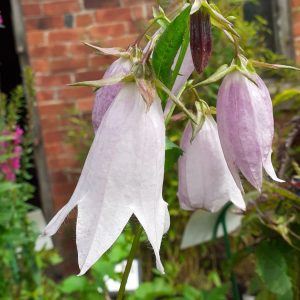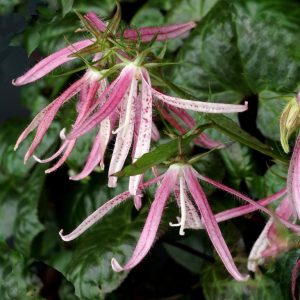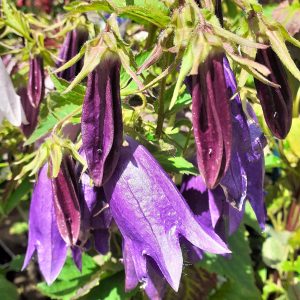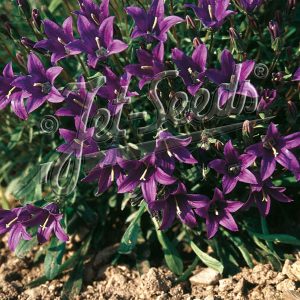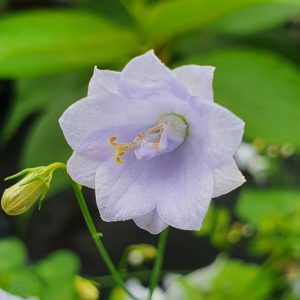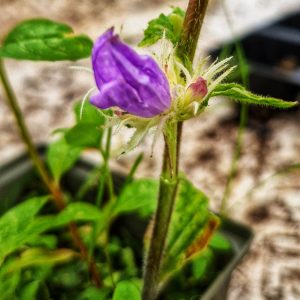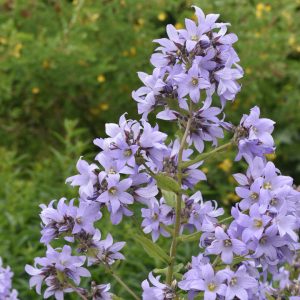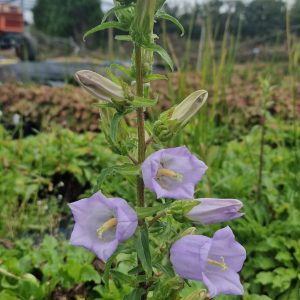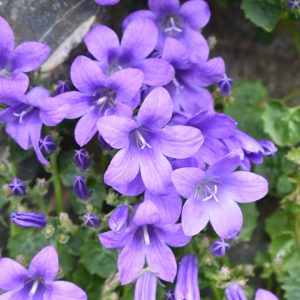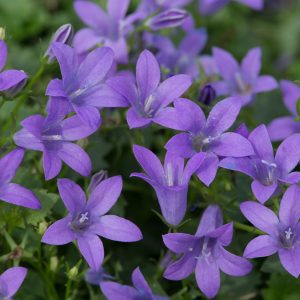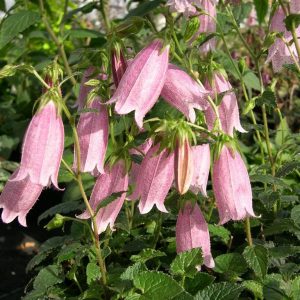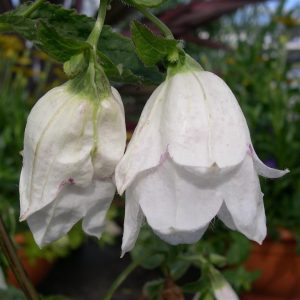Campanula, commonly known as Bellflower, is a diverse and charming perennial that adds beauty to gardens with its bell-shaped flowers. Follow this planting guide to ensure successful cultivation and a bounty of lovely blooms.
Selecting the Planting Site
Sunlight Requirements: Choose a location with full sun to partial shade. Campanula generally thrives in well-lit areas but appreciates some protection from intense afternoon sun.
Soil Conditions: Plant in well-draining soil with a slightly acidic to neutral pH. Campanula is adaptable but prefers fertile, loamy soil.
Planting Time
Optimal Timing: Plant Campanula in the spring or early Autumn. These seasons provide moderate temperatures and allow the plants to establish before extreme weather conditions.
Planting Process
Prepare the Soil: Work the soil to a depth of 12 inches, incorporating organic matter such as compost for improved fertility.
Spacing: Plant Campanula according to the specific variety, but generally, space plants 12 to 18 inches apart to allow for proper growth and air circulation.
Plant Depth: Set the plants at the same depth they were in the nursery containers. Water thoroughly after planting.
Watering
Establishment Period: Water regularly during the first growing season to aid in establishing strong root systems.
Consistent Moisture: Campanula appreciates consistent moisture. Keep the soil consistently moist, especially during dry periods.
Mulching
Organic Mulch: Apply a 2-3 inch layer of organic mulch around the plants. Mulch helps retain soil moisture, suppress weeds, and insulate the soil.
Fertilisation
Balanced Fertiliser: Apply a balanced, slow-release fertiliser in spring before the growing season begins. Follow package instructions for application rates.
Support
Staking: Taller varieties may benefit from staking to prevent flopping. Install stakes early in the growing season to provide support.
Pruning
Deadheading: Remove spent flowers to encourage continuous blooming and maintain a tidy appearance. Trim back the entire plant after the first flush of blooms to encourage a second round.
Pest and Disease Management
Aphid Control: Monitor for aphids, particularly on new growth. Use insecticidal soap or a strong stream of water to control infestations.
Good Air Circulation: Ensure proper spacing between plants to promote good air circulation and reduce the risk of fungal diseases.
Winter Care
Cold Hardy: Campanula is generally cold-hardy. Mulch lightly in late Autumn to provide some protection in harsh winter climates.
Avoid Waterlogging: Ensure the soil drains well during winter to prevent waterlogging, which can lead to root rot.
Division
Periodic Division: Every 3-4 years, consider dividing mature Campanula clumps to rejuvenate the plants. This is best done in early spring.
Adaptation
Monitor and Adjust: Regularly monitor the overall health of your Campanula. Adjust care practices based on specific growing conditions and be prepared to address any adverse effects.
By following this guide, you’ll establish a flourishing Campanula, filled with the delightful charm of bell-shaped flowers. Adapt care practices based on your specific growing conditions and enjoy the enduring beauty that Campanula brings to your landscape.





